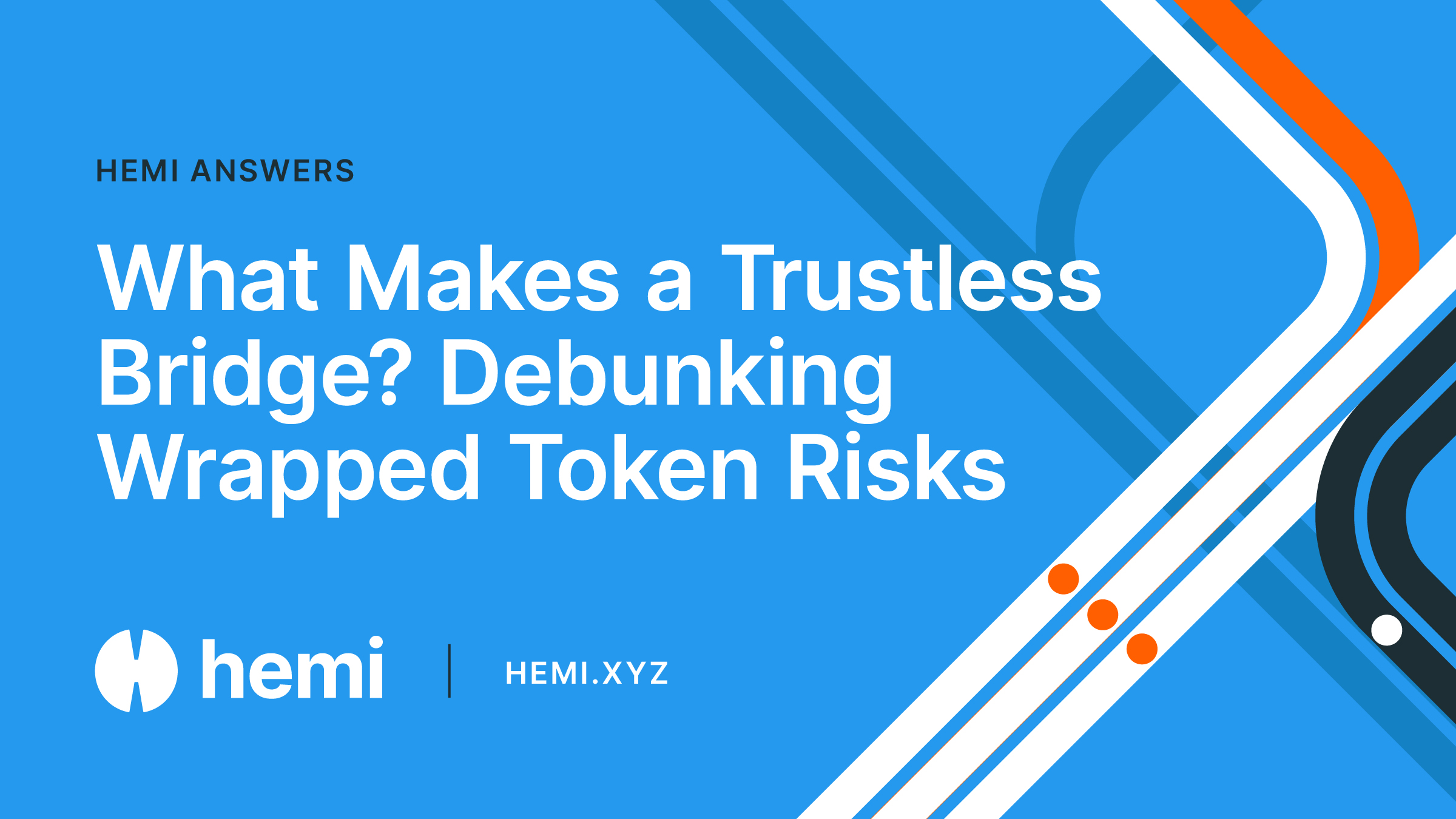- Bitcoin
- Ethereum
- Hemi
- Learn Center
- August 5, 2025
What Makes a Trustless Bridge? Debunking Wrapped Token Risks

Crypto bridges play a crucial role in moving assets between blockchains. But not all bridges are created equal. The term “trustless bridge” gets used often, yet many so-called trustless designs still rely on centralized custodians or opaque validator sets. At the same time, the use of wrapped tokens introduces its own set of risks that users rarely understand. In this article, we break down what makes a bridge truly trustless and why wrapped assets are often the weakest link.
How a Crypto Bridge Works
A typical crypto bridge locks tokens on the origin chain and issues a wrapped version on the destination chain. This process is fast and familiar, but it introduces a dependency on the entity or contract holding the locked tokens. If that custodian is compromised — as we’ve seen in several high-profile bridge hacks — all wrapped assets tied to it can instantly lose value.
The Myth of the Trustless Bridge
Many bridges claim to be trustless because they use smart contracts to manage funds. But even these contracts often rely on a limited set of off-chain actors to validate cross-chain messages. If that validator set colludes or gets hacked, the bridge can be drained. True trustless bridges eliminate single points of failure by making each blockchain independently verify the other’s state without relying on a separate authority.
Wrapped Token Risks Explained
Wrapped tokens are only as secure as the system backing them. They are IOUs — promises that an asset exists somewhere else. If the bridge holding those assets fails, the wrapped token becomes worthless. This fragility makes wrapped tokens one of the most persistent risks in cross-chain DeFi. The more chains you bridge across, the greater the surface area for attacks.
Hemi’s Trust-Minimized Approach with Crypto Tunnels
Hemi avoids many of these issues with its crypto tunnels. Instead of locking tokens and minting wrapped versions, Hemi’s design lets blockchains validate each other’s transactions directly using Proof-of-Proof (PoP) consensus. This means no centralized custodian, no wrapped token dependency, and no need to trust an external validator set.
By eliminating the wrapping process entirely, Hemi’s model aligns with the original vision of a trustless bridge — one where the bridge logic lives inside the security guarantees of the chains themselves.
Why This Matters for DeFi
The next wave of decentralized finance will demand safer, more efficient cross-chain movement of assets. The industry is learning that crypto bridges relying on wrapped tokens are a short-term fix, not a permanent solution. Models like Hemi’s crypto tunnels point toward a future where bridging is native, trust-minimized, and resistant to the failures that have plagued wrapped assets.